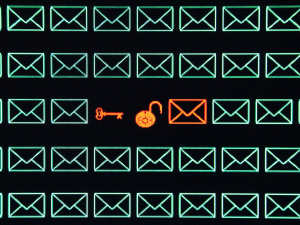
Emailing is the primary form of communication for businesses worldwide. They also represent one of the most convenient routes for cyber threats to stage their attack. With the stakes higher than ever and directives from data privacy governing bodies becoming more strict, knowing how to navigate secure email communication is no longer an option—it is imperative for businesses.
The Silent Risks Lurking in Your Inbox
Cyber threats such as phishing, malware, and man-in-the-middle attacks often target email to gain unauthorized access and steal data. The fallout from these breaches can be devastating, affecting both individuals and the reputation and security of businesses. In this article, we dive deep into this problem, giving you a strong understanding of how to protect your data.
Unpacking the Layers of Email Encryption
Email encryption is all about making the content of your emails hard to read for anyone who isn't supposed to see them, and protecting your private information from people who shouldn't have access. This can be done using one single program that both locks and unlocks the emails, or a set of different tools that work together.
It acts like an invisible, yet strong shield for your data, mixing up the information so only the person you're sending the email to, who has the special key to unlock it, can understand it. Think of it as a secret code that only you and your friend know.
Public Key Infrastructure (PKI)
One of the most popular methods for securing emails is PKI. It uses two keys for encryption: a public key, which everyone can see, and a private key, which is kept secret by the recipient only. When a message is encrypted with the recipient's public key, it can only be decrypted with their private key. This approach makes sure that even if someone unauthorized gets the message, they can't understand it.
Symmetric Key Encryption
Symmetric key encryption systems use the same keys for both locking (encryption) and unlocking (decryption) information. To keep things secure, the keys need to be shared between the sender and receiver through a separate, secure way. Once the keys are shared, though, locking and unlocking information can be faster than with Public Key Infrastructure (PKI).
Fortifying Your Digital Walls with Encryption
Implementing secure email practices isn't just selecting the right software. It's about ensuring it integrates effectively into your existing communication system infrastructure. Your defenses are only as strong as their weakest link, so ensuring that email encryption is a part of your business's security strategy is critical.
Choosing the Right Service
Selecting the right email encryption tool/service can be tough because there are so many options available on the market. It is important to evaluate these options based on your organization's specific needs, which include the volume and sensitivity of your email traffic, your technical capabilities, and your budget.
Here are four of the most popular services used for email encryption:
User Training and Adoption
Even the best encryption software won't work right if it's not used properly. Training on how to use email encryption should be a key part of training for new employees, as well as regular updates for all staff. They need to know not just how to lock and unlock messages, but also when it's important to use secure communication.
Navigating the Seas of Compliance and Regulations
In today's legal landscape, protecting sensitive data is not just recommended—it's required by law. Regulations such as the General Data Protection Regulation (GDPR) and the Health Insurance Portability and Accountability Act (HIPAA) set strict requirements on how organizations must handle and protect personal and sensitive information.
Compliance Requirements
To keep up with regulations, organizations must first understand the specific compliance requirements applicable to them. This involves assessing the types of data they process, how email is used in their business, and the specific requirements of relevant regulations.
Email Retention Policies
Adhering to regulations requires not just securing emails but also setting how long they need to be kept. Crafting and implementing an email retention policy that complies with these standards is vital for your compliance strategy.
Continuous Auditing and Documentation
Keeping up with regulations requires viewing compliance as an ongoing journey, not a one-off task. Continuously monitor and adjust by implementing an audit system for your email security and keeping detailed records of your compliance activities to ensure you remain on track.
Outlook for the Future: Emerging Trends in Email Security
The battle between those protecting email communication and those trying to attack it is always changing. New technologies like quantum encryption and AI-driven threat detection are set to take email security to the next level.
Quantum-Resistant Encryption
The arrival of quantum computing could weaken today's encryption methods, making them easy targets for quantum attacks. However, there's hope. Developers are working on new encryption methods that even the most advanced quantum computers won't be able to crack, aiming to keep email security strong in the future.
AI and Machine Learning
AI and machine learning make it easier to spot and block dangerous emails quickly and accurately, thanks to their ability to recognize patterns and detect threats better. Plus, these technologies help create smart security measures that can adjust to new dangers on their own, in real-time.
Mobile Device Management (MDM)
As remote and mobile work becomes more common, keeping devices that access email systems secure is more important than ever. MDM (Mobile Device Management) solutions help by enforcing security rules, managing who can access what, and dealing with security issues for many devices. This makes email communications much safer overall.
Ultimately
Email encryption is not just another task on your IT security list; it's a key part of keeping any modern business safe and reputable. It's crucial to understand the risks, use strong encryption methods, handle the rules and regulations properly, and stay updated on new security trends.
Do you have a question our article didn't cover? Feel free to contact us today; we're here to help!




